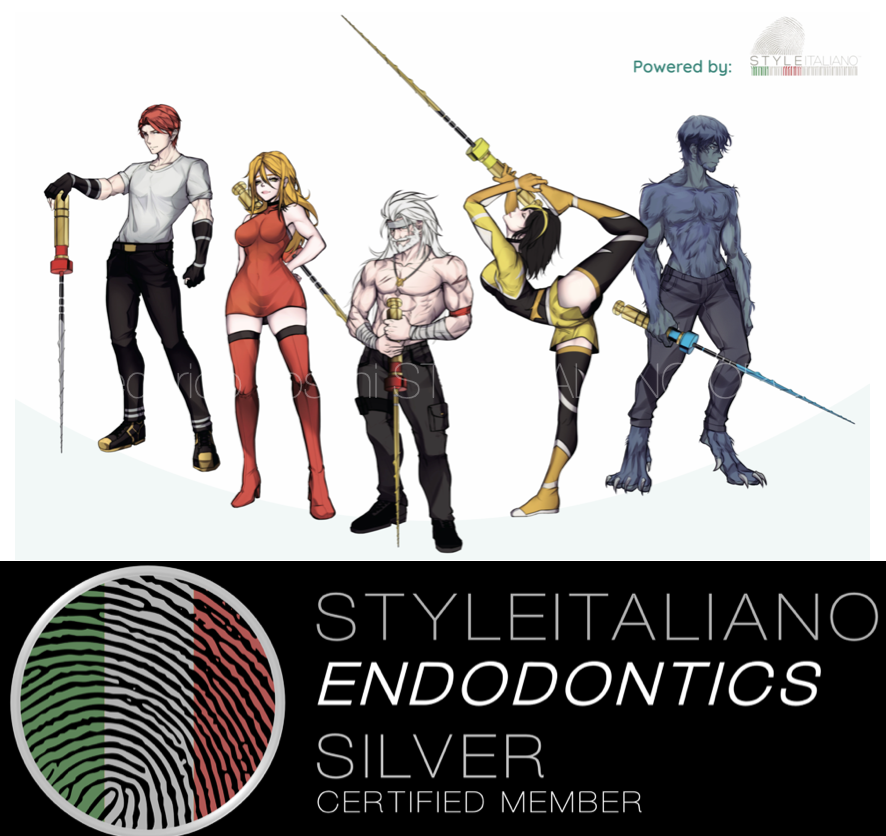
ReTreaty kit for conservative retreatments
21/09/2023
Riccardo Tonini
Warning: Undefined variable $post in /var/www/vhosts/styleitaliano-endodontics.org/endodontics.styleitaliano.org/wp-content/plugins/oxygen/component-framework/components/classes/code-block.class.php(133) : eval()'d code on line 2
Warning: Attempt to read property "ID" on null in /var/www/vhosts/styleitaliano-endodontics.org/endodontics.styleitaliano.org/wp-content/plugins/oxygen/component-framework/components/classes/code-block.class.php(133) : eval()'d code on line 2
The primary goal of an endodontic treatment is to access, shape and clean the intricate anatomy in a way that allows efficient 3 D filling of the root canal system, while leaving the tooth with the sufficient sound tissue for granting perfect coronal seal and a long term function. But in case of failure, the primary goal of a retreatments remains the same and about re-shaping the dilemma is always: did I shape enough? How much should I enlarge apical diameter and taper? How can I avoid apical debris extrusion?

Fig. 1
The most appropriate retreatment technique should be selected to achieve complete removal of the pre-existing root filling material, without causing apical extrusion. It can be achieved thanks to the immediate use of rotary files in a crown down sequence. ReTreaty kit, designed by Style Italiano Endodontics and produced by Perfect Endo, performs a retreatment following the most modern approach.
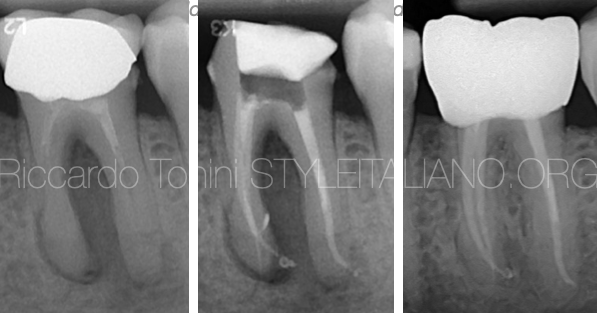
Fig. 2
The first step is to analyze the Xray in order to evaluate the anatomy and the previous treatment quality, understanding the depth of previous root filling material and the presence in case of iatrogenic errors like ledges or strippings.
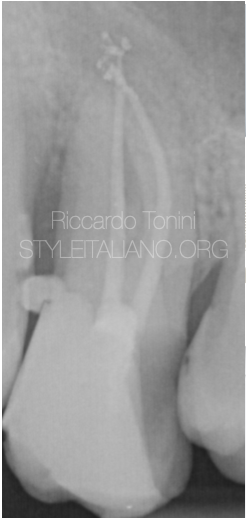
Fig. 3
The clinical case has been shaped with ReTreaty. It was symptomatic. Distal canal and Mb2 were not treated properly
Bull Y in action. 25/07, gold heat treated alloy, 21mm long with a semi active tip. The intent is just to remove Guttapercha in the coronal part in a conservative way.
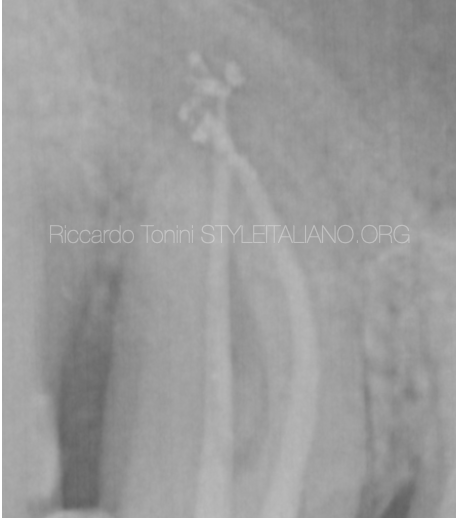
Fig. 4
Palatal canal and Mb1 have GP until WL, so it’s indicated the use of Skinny, the thinnest but harder file of the kit.
Skinny in action
Patency has been obtained with manual file, and immediately after Shapy 1( 20/05) tool went in action for re shaping the Palatal and MB1 and for shaping Distal and MB2. What is great in this kit, is that Shapy files can be used also for primary treatment. At the end final shaping was: Shapy 3 for Palatal, Shapy 2 for MB1 and Shapy 1 for MB1 and Distal.
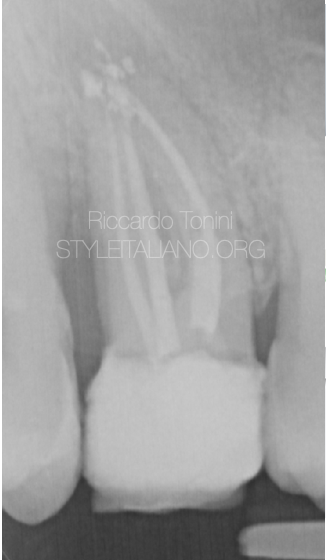
Fig. 5
Bioceramic sealer and GP cones for final seal.
Another example: a conventional retreatment performed with full Retreaty kit and just few hand files for taking the WL
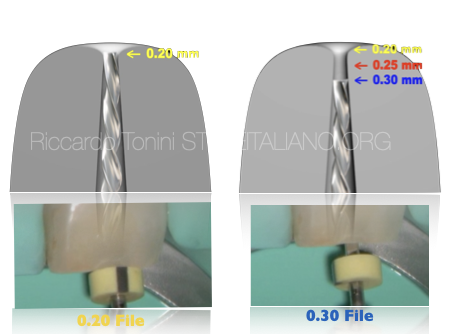
Fig. 6
But what to do if the final apical Gauging is more than 30? The image shows the example of conventional manual gauging
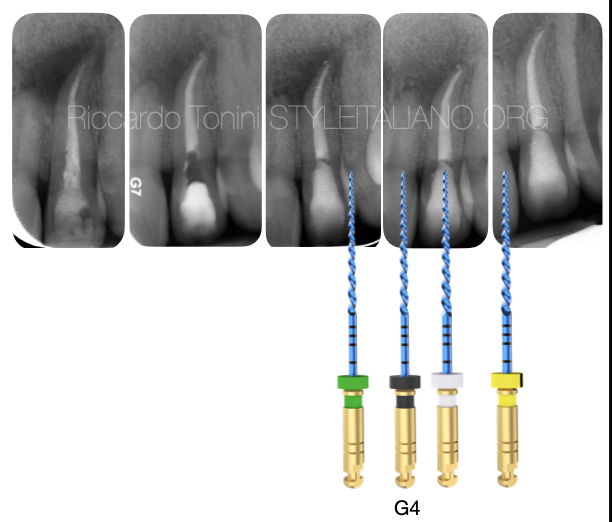
Fig. 7
Is enough to chose MG3 blue final shaper, as example a 35, 40,45 or 50 in 04 Taper for refining the apex. In this case after Shapy3 it has been decided to refine the apical region with MG3 Blue G4
Conclusions
The smaller file that collects debris in the last mm is the one who shaped properly the apex. An over shaping is no more requested and suggested, the reason why a retreatment nowadays should be as much conservative as possible in order to avoid anatomy alterations and iatrogenic errors.
Bibliography
Al-Omari MA, Dummer PM (1995) Canal blockage and debris extrusion with eight preparation techniques.
Journal of Endodontics 21, 154–8
Friedman S (2008) Expected outcomes in the prevention and treatment of apical periodontitis. In: Ørstavik D, Pitt FT,eds. Essential Endodontology, 2nd edn. London, UK Oxford: Blackwell Science, pp. 427–32.
Friedman S, Stabholz A, Tamse A (1990) Endodontic retreatment case selection and technique. Part 3. Retreatment techniques. Journal of Endodontics 16, 543–9.
Fukushima H, Yamamoto K, Hirohata K, Sagawa H, Leung K-P, Walker C (1990) Localization and identification of root canal bacteria in clinically asymptomatic periapical pathosis.Journal of Endodontics 16, 534 –8



